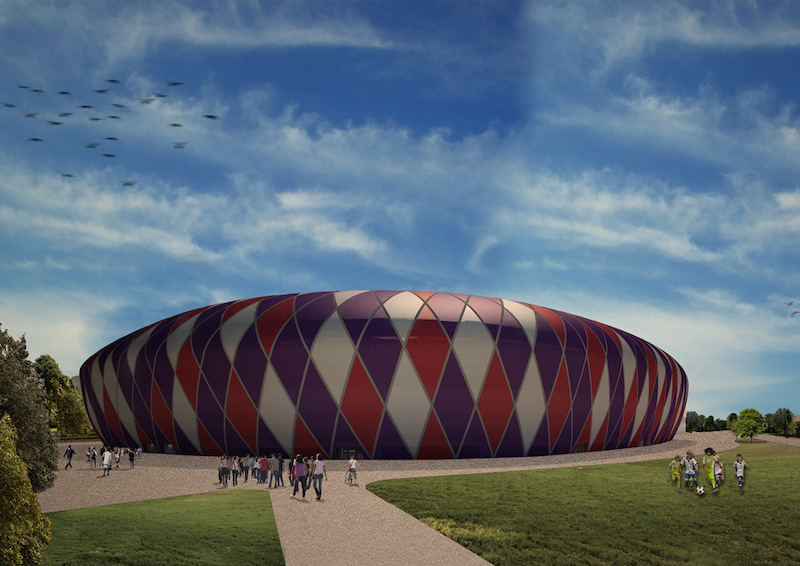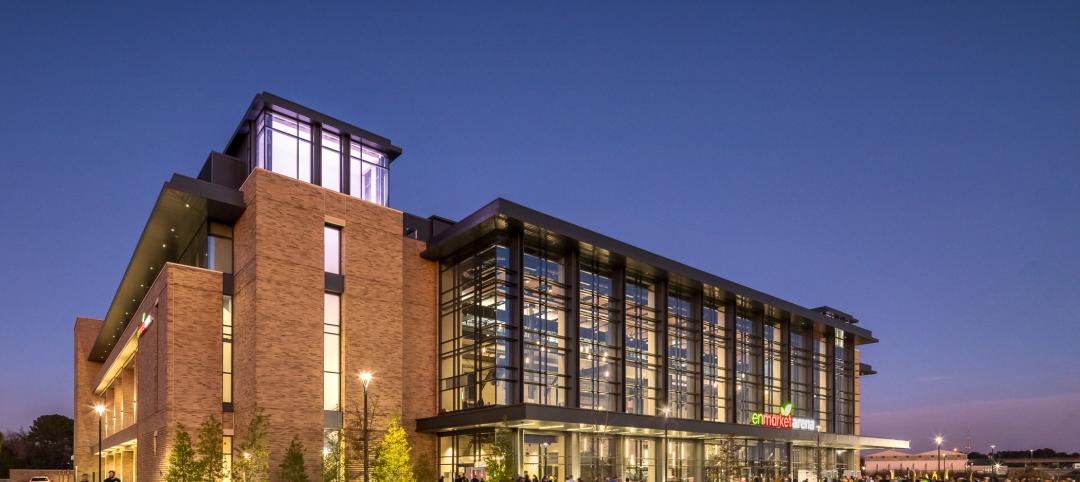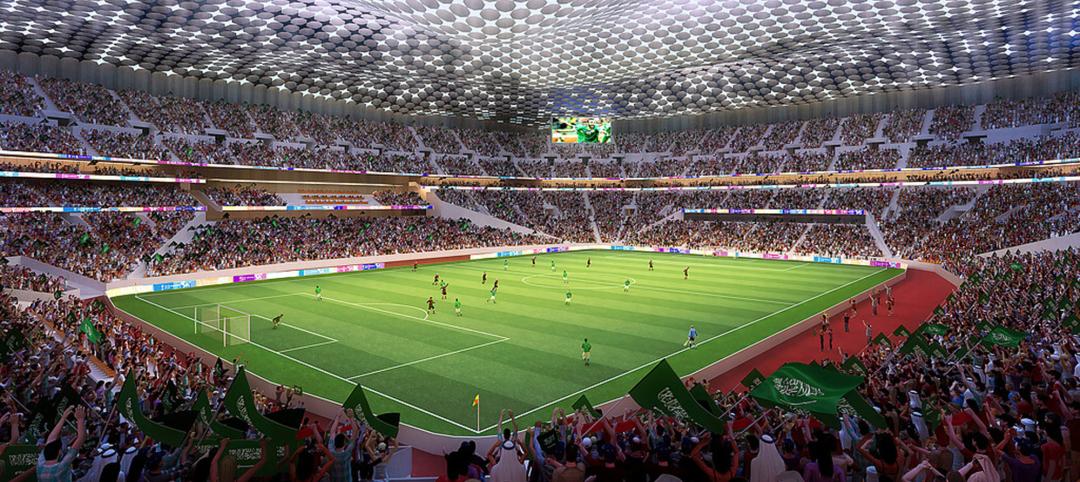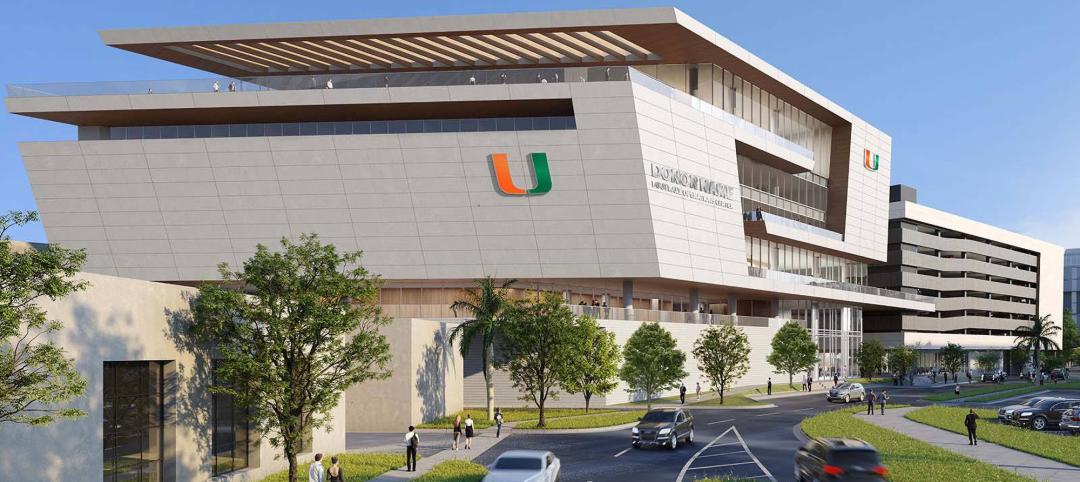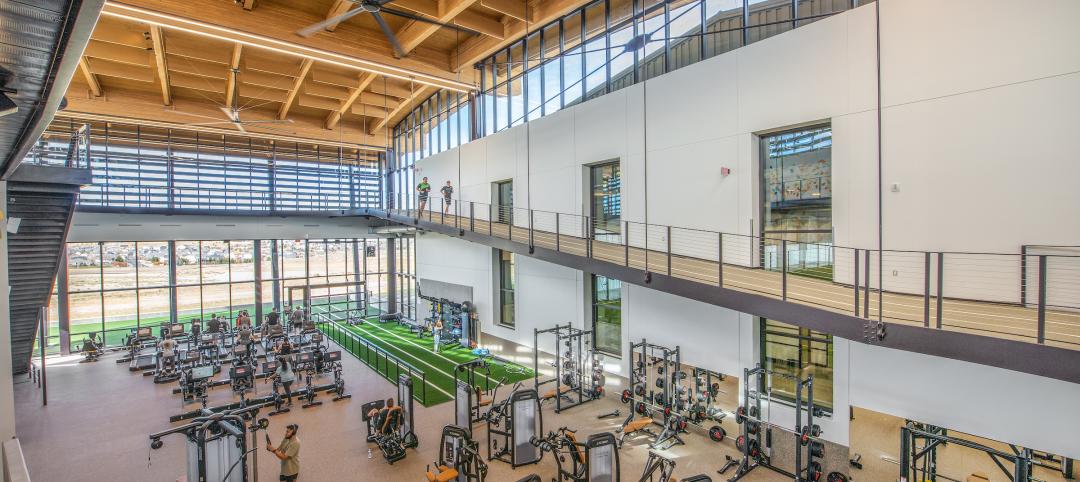Last June, Rocco Commisso, the Italian-American chairman of the cable TV provider Mediacom Communications, took ownership of the Italian soccer club A.C.F. Fiorentina, based in Florence, Italy, where the team is known locally as the Viola, for its violet-colored jerseys.
The 69-year-old Commisso, who also owns the New York Cosmos soccer club in the U.S., (and who previously tried, but failed, to acquire the A.C. Milan club in Italy) has identified the need for Fiorentina to play its home games in a modern sports stadium. Right now, the club plays at Stadio Artemio Franchi, which opened in 1931.
According to Stadium Business, the Municipality of Florence in October approved a proposal to make a plot of land available for the potential development of a new stadium.
Florence-based Pierattelli Architetture has proposed a design for that new stadium as a component of a master plan that upgrades and expands the Novoli district in the northwest part of the city. That master plan focuses on improving the area’s existing subpar road network, and creating a new road network through the city’s food and beverage market known as Mercafir.
Pierattelli envisions a rhomboid-shaped stadium that resembles a large stone, higher on one side than the other, whose outer structure is clad in metal mesh of purple, white, and red, the team’s colors. The building would have 16 entrance points (four with turnstiles), and three grandstand rings, as well as a shopping mall and food service.
The 40,000-seat stadium would have a perimeter of approximately 600 meters (1,969 feet), a maximum width of over 200 meters, and a maximum length of 150 meters. Its height would range from 30 to 40 meters, with the highest section overlooking the grandstands in front of the new entrance.
The building is designed as a series of rings. A double-volume ring at the ground floor level channels the flow of people into different areas and levels. The second ring includes VIP grandstands, and 10 skyboxes of about 172 sf each and four of which would include meeting rooms. The last ring, which dominates the stadium, would house the dividers and columns that support the building’s entire internal structure.
There would also be an underground area for a swimming pool, dressing rooms, warm-up area and wellness center, and hospitality suite through which the press room, VIP grandstands and restrooms could be accessed.
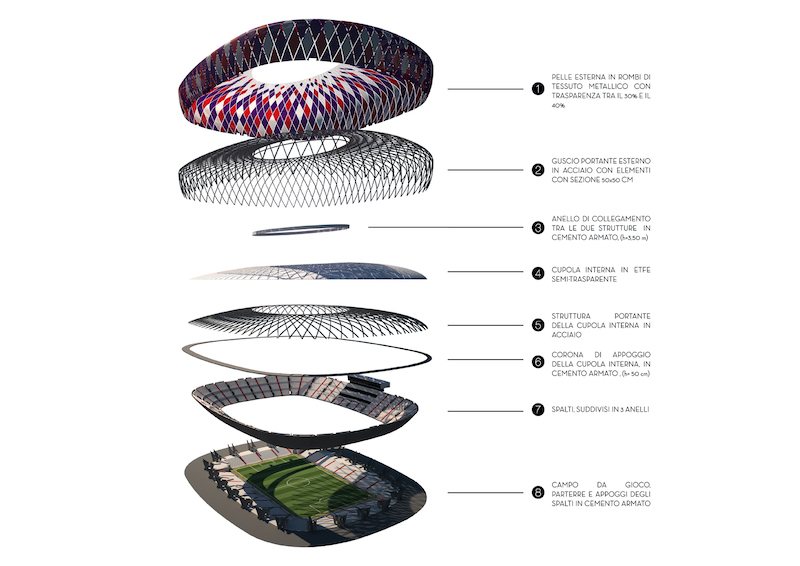
Pierattelli's stadium design revolves around a series of architectural rings.
Pierattelli has positioned its design proposal as “a new vision of the city,” that amalgamates architecture, urban planning, and social life. The 148-acre Novoli neighborhood is currently lacking modern infrastructure. Pierattelli proposes that Viale Guidone, the city’s main traffic artery, be redirected as a one-way thoroughfare underground through a tunnel whose entrance would be near the city’s railway and whose exit would be in front of the city’s Palace of Justice. Ground-level pedestrian and cycle paths would be maintained.
Another road would be added that connects the city’s Piazza Artom with its Via dell’Olmatello, and divides the Mercafir in half, making part of this road exclusively for foot traffic, and “an island of peace within an area of inter-municipal traffic,” states the architect. The Municipality of Florence has opted to put part of the Mercafir area up for sale, with a prospect of that land being purchased for the development of the new stadium, according to Stadium Business.
The master plan also proposes creating four artificial hills with a maximum height of six meters, which would establish the neighborhood’s boundaries and provide more green space for the city.
Commisso has stated his goal to move his team into a new stadium by September 2023. The question remains, though, whether the team will be receptive to the municipality’s redevelopment plan. The club reportedly is weighing leaving this area of Florence to develop its new stadium in the commune of Campi Besenzio, about 10 miles northwest of Florence.
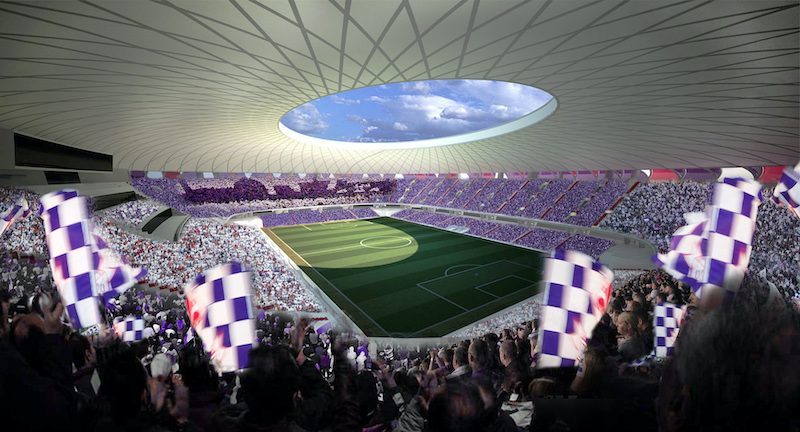
The proposed stadium would seat 40,000 fans. An underground floor would include a swimming pool and warm-up area for the contestants. Seen from above, the stadium resembles a flower.
Related Stories
Sports and Recreational Facilities | Jun 22, 2023
NFL's Jacksonville Jaguars release conceptual designs for ‘stadium of the future’
Designed by HOK, the Stadium of the Future intends to meet the evolving needs of all stadium stakeholders—which include the Jaguars, the annual Florida-Georgia college football game, the TaxSlayer.com Gator Bowl, international sporting events, music festivals and tours, and the thousands of fans and guests who attend each event.
Arenas | Jun 14, 2023
A multipurpose arena helps revitalize a historic African American community in Georgia
In Savannah, Ga., Enmarket Arena, a multipurpose arena that opened last year, has helped revitalize the city’s historic Canal District—home to a largely African American community that has been historically separated from the rest of downtown.
Architects | Jun 6, 2023
Taking storytelling to a new level in building design, with Gensler's Bob Weis and Andy Cohen
Bob Weis, formerly the head of Disney Imagineering, was recently hired by Gensler as its Global Immersive Experience Design Leader. He joins the firm's co-CEO Andy Cohen to discuss how Gensler will focus on storytelling to connect people to its projects.
Sports and Recreational Facilities | May 30, 2023
How design supports a more holistic approach to training
For today’s college athletes, training is no longer about cramming team practices and weight lifting sessions in between classes.
Arenas | May 18, 2023
How can we reimagine live sports experiences?
A Gensler survey finds what sports fans' experiences have been like returning to arenas, and their expectations going forward.
Digital Twin | May 8, 2023
What AEC professionals should know about digital twins
A growing number of AEC firms and building owners are finding value in implementing digital twins to unify design, construction, and operational data.
Collegiate Stadiums | Apr 4, 2023
6 examples of modern college training facilities
HOK discusses the future of college training facilities, with six design takeaways derived from a discussion between Dan Radakovich, Director of Athletics at the University of Miami, and Trevor Bechtold, Director, HOK’s Sports + Recreation + Entertainment practice.
Sports and Recreational Facilities | Mar 30, 2023
New University of St. Thomas sports arena will support school's move to Division I athletics
The University of St. Thomas in Saint Paul, Minn., last year became the first Division III institution in the modern NCAA to transition directly to Division I. Plans for a new multipurpose sports arena on campus will support that move.
Sports and Recreational Facilities | Mar 17, 2023
Aurora, Colo., recreation center features city’s first indoor field house, unobstructed views of the Rocky Mountains
In January, design firm Populous and the City of Aurora, Colo. marked the opening of the Southeast Aurora Recreation Center and Fieldhouse. The 77,000-sf facility draws design inspiration from the nearby Rocky Mountains. With natural Douglas Fir structure and decking, the building aims to mimic the geography of a canyon.
Sports and Recreational Facilities | Mar 15, 2023
Georgia State University Convocation Center revitalizes long-neglected Atlanta neighborhood
Georgia State University’s new Convocation Center doubles the arena it replaces and is expected to give a shot in the arm to a long-neglected Atlanta neighborhood. The new 200,000 sf multi-use venue in the Summerhill area of Atlanta is the new home for the university’s men’s and women’s basketball teams and will also be used for large-scale academic and community events.


